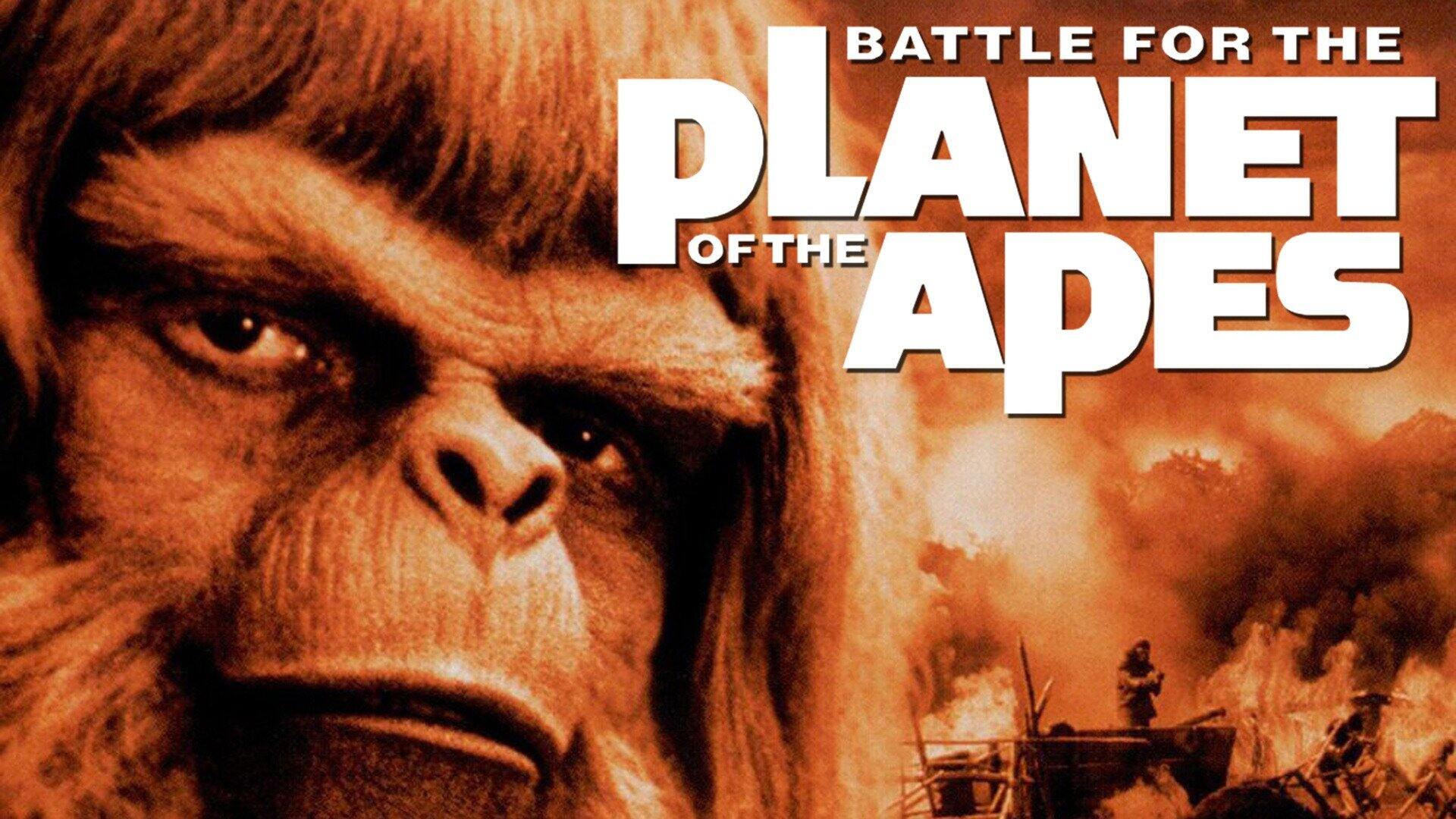
Battle for the Planet of the Apes is a thrilling science fiction film that captivated audiences when it hit the big screens. Released in 1973, it is the fifth installment in the iconic Planet of the Apes franchise. Directed by J. Lee Thompson, the movie continues the epic saga of intelligent apes and their struggle for dominance over humans in a post-apocalyptic world.
In this article, we will explore 31 fascinating facts about Battle for the Planet of the Apes that will surely enhance your viewing experience. From behind-the-scenes trivia to behind-the-camera details, you’ll gain insights into the making of this legendary movie. So, sit back and get ready to delve into the world of talking apes, philosophical dilemmas, and the battle for survival.
Key Takeaways:
- Battle for the Planet of the Apes” is the final film in the original series, exploring themes of peace and coexistence between apes and humans in a post-apocalyptic future. Despite budget constraints, it grossed over $8 million.
- The movie’s optimistic tone, ethical themes, and climactic battle sequence make it a cult classic. It marks the end of the original series but continues to inspire subsequent adaptations and a dedicated fan base.
Battle for the Planet of the Apes is the fifth and final film in the original Planet of the Apes film series.
Battle for the Planet of the Apes, released in 1973, serves as a direct sequel to the previous film, Conquest of the Planet of the Apes.
The movie was directed by J. Lee Thompson.
J. Lee Thompson, known for directing films like The Guns of Navarone and Cape Fear, was chosen to helm Battle for the Planet of the Apes.
The script was written by John William Corrington and Joyce Hooper Corrington.
John William Corrington and Joyce Hooper Corrington penned the screenplay for Battle for the Planet of the Apes, based on characters created by Pierre Boulle.
Rodney McDowell reprises his role as Caesar, the intelligent and compassionate ape leader.
McDowell’s portrayal of Caesar is considered one of the highlights of the film series.
The movie takes place in a post-apocalyptic future where apes and humans struggle for coexistence.
Set in the year 2670, Battle for the Planet of the Apes explores themes of peace, harmony, and the consequences of war.
The film boasts an impressive ensemble cast.
In addition to Rodney McDowell, Battle for the Planet of the Apes features actors such as Claude Akins, Natalie Trundy, Severn Darden, and Paul Williams.
Battle for the Planet of the Apes faced budget constraints during production.
The filmmakers had to make do with a limited budget, which affected some aspects of the film, including the special effects.
Despite its budget limitations, the movie still managed to gross over $8 million at the box office.
Battle for the Planet of the Apes performed well commercially, proving the enduring popularity of the franchise.
The film showcases both live-action performances and prosthetic makeup effects.
The makeup effects were created by John Chambers, who received an Academy Award for his work on the original Planet of the Apes.
Battle for the Planet of the Apes explores the origins of the ape society depicted in the previous films.
The movie delves into the creation of a united ape civilization and its challenges in maintaining peace.
The film features flashbacks to events from the earlier Planet of the Apes movies.
These flashbacks provide continuity to the storyline and tie the events of Battle for the Planet of the Apes to the larger series.
Battle for the Planet of the Apes is known for its optimistic and hopeful tone.
Unlike the darker and more pessimistic tone of some of its predecessors, this film offers a more uplifting message.
The movie explores the themes of empathy, compassion, and the potential for cooperation between different species.
It raises thought-provoking questions about the nature of humanity and the possibilities of a harmonious coexistence.
The battle scenes in the film were choreographed by Terry Leonard, known for his work in action sequences.
The battle scenes add excitement and intensity to the narrative, showcasing the conflict between the apes and humans.
Battle for the Planet of the Apes was released to mixed reviews from critics.
Some praised its ambitious themes and allegorical storytelling, while others found it lacking in comparison to the earlier films.
The movie marked the end of the original Planet of the Apes film series.
It concluded the story arc that began with the 1968 original film and ended with Battle for the Planet of the Apes.
The success of Battle for the Planet of the Apes led to a short-lived television series based on the franchise.
The TV series, also titled Planet of the Apes, aired in 1974 and further expanded the world of the apes.
Battle for the Planet of the Apes has become a cult classic among fans of the series.
Despite its mixed critical reception, the film has gained a dedicated following over the years.
The movie’s score was composed by Leonard Rosenman.
Rosenman’s music adds depth and emotion to the storytelling, enhancing the overall cinematic experience.
Battle for the Planet of the Apes offers a glimpse into a possible future for humanity.
It serves as a cautionary tale about the consequences of war, greed, and the destruction of the planet.
The film’s production design incorporates a blend of futuristic elements and remnants of the destroyed human civilization.
The juxtaposition of these elements helps create a visually striking and immersive world.
Battle for the Planet of the Apes inspired subsequent adaptations and reboots of the franchise.
Its influence can be seen in later films, such as the 2011 reboot Rise of the Planet of the Apes.
The movie raises philosophical questions about power, leadership, and the potential for a better future.
It explores the complexities of governance and the challenges faced by those in positions of authority.
Battle for the Planet of the Apes emphasizes the importance of understanding and empathy in building a peaceful society.
It underscores the need to overcome differences and work towards a common goal.
The film’s release was preceded by a marketing campaign that included trailers, posters, and promotional materials.
The campaign aimed to generate excitement and anticipation among audiences.
Battle for the Planet of the Apes borrows elements from various genres, including science fiction, dystopian fiction, and adventure.
Its genre-blending approach adds depth and complexity to the narrative.
The movie’s special effects team faced challenges in creating realistic ape characters within the constraints of the budget.
Despite these limitations, the effects team managed to bring the apes to life, albeit with some limitations.
Battle for the Planet of the Apes delves into the ethical implications of scientific advancements.
It raises questions about the boundaries of knowledge and the potential consequences of pushing scientific boundaries.
The movie’s climactic battle sequence is a key highlight, showcasing the tensions between the apes and humans.
This intense sequence adds dramatic tension and serves as a culmination of the conflicts explored throughout the film.
Battle for the Planet of the Apes serves as a satisfying conclusion to the original film series.
It brings the storyline full circle and offers closure for the characters and themes introduced in the previous films.
The legacy of Battle for the Planet of the Apes lives on through subsequent films, TV adaptations, and a dedicated fan base.
Its impact continues to resonate within the science fiction genre and remains a significant part of cinematic history.
Conclusion
In conclusion, Battle for the Planet of the Apes is a significant installment in the iconic movie franchise. With its intriguing storyline, memorable characters, and impressive visual effects, it captivates audiences and keeps them on the edge of their seats.This movie delves deeper into the conflict between humans and apes, exploring themes of power, morality, and the consequences of our actions. It provides thought-provoking commentary on society and the potential consequences of a world dominated by either species.The success of Battle for the Planet of the Apes paved the way for future films and spin-offs in the franchise, solidifying its place in cinema history. Whether you’re a fan of the original films or a newcomer to the series, this movie is definitely worth a watch.So, grab some popcorn, turn off the lights, and immerse yourself in the thrilling world of Battle for the Planet of the Apes.
FAQs
1. Who directed Battle for the Planet of the Apes?
Answer: Battle for the Planet of the Apes was directed by J. Lee Thompson.
2. Is Battle for the Planet of the Apes a sequel?
Answer: Yes, Battle for the Planet of the Apes is the fifth and final film in the original Planet of the Apes series.
3. When was Battle for the Planet of the Apes released?
Answer: The movie was released on June 15, 1973.
4. Who stars in Battle for the Planet of the Apes?
Answer: The film stars Roddy McDowall, Claude Akins, and Natalie Trundy among others.
5. Is Battle for the Planet of the Apes suitable for all ages?
Answer: Battle for the Planet of the Apes is rated PG, meaning it may contain some material that may not be suitable for young children.
6. Are there any Easter eggs or references to the previous films in Battle for the Planet of the Apes?
Answer: Yes, Battle for the Planet of the Apes includes nods to the previous films in the series, providing a sense of continuity for fans.
7. What is the premise of Battle for the Planet of the Apes?
Answer: The movie is set in a post-apocalyptic future where humans and intelligent apes are in conflict, and follows Caesar, the leader of the apes, as he tries to maintain peace between the two species.
Was this page helpful?
Our commitment to delivering trustworthy and engaging content is at the heart of what we do. Each fact on our site is contributed by real users like you, bringing a wealth of diverse insights and information. To ensure the highest standards of accuracy and reliability, our dedicated editors meticulously review each submission. This process guarantees that the facts we share are not only fascinating but also credible. Trust in our commitment to quality and authenticity as you explore and learn with us.


